 Your new post is loading...
 Your new post is loading...
If the last twenty years is any indication, the future poses significant challenges for marketers, especially in terms of content creation. From the mid-90s, when the internet was a novelty, to now, with our constant connection to technology, disruption has been the name of the game. Marketers have had to continually shift to keep up with emerging digital trends. While it’s true that technology innovation has a seismic effect on marketing trends, you don’t need to be a fortune teller to predict the future of marketing—you just need to follow the current trends to their logical destinations. Here are four current trends, and some predictions on how these trends will influence the content marketing strategies of tomorrow....
“When you tell people you work at National Geographic, you get incredible reactions. It’s revered, trusted, and stands for quality. And, they’ve been at the content game for close to 130 years,” she says. On the other hand, Cress says her role feels more like being at the helm of a one-year old company. “National Geographic Partners is a joint venture between 21st Century Fox and the National Geographic Society. We’re like a well funded startup, working on reinventing and reinvigorating the brand,” she says. But with so much history to rely upon, however, the brand is hardly resting on its laurels. Instead, it’s continuing to push the boundaries of innovation and technology, just like it did back when Alexander Graham Bell was the president of the National Geographic Society. He was the one to make the then-controversial decision to start including photography in the magazine, something that was considered to be a lowbrow, tabloid way to sell magazines....
“Will artificial intelligence replace marketers in the near future?” This is the compelling question posted by Loren McDonald of IBM Watson Marketing. Think about all the structured, repetitive and rules based tasks you might do on a regular basis as part of your job as a marketer. They are all open to being completed by an AI service. Not only could they be completed by a computer, but they could be done faster and with fewer errors. That could free marketers up to spend time on managing even more programs without additional staff. Now, if you’re wondering what roles and tasks are at risk, Loren shared this list: - Easily repeatable - Data-centric - Tasks that improve with learning - Rules drive tasks - Reporting - Customer and segment analysis - Campaign automation - Media buying - Campaign testing...
Millennials make up a crucial group of consumers.
Ad agency Moosylvania asked over 3,500 millennials — defined as 20 to 35-year-olds — to select their favorite brands over the past three years.
Great Questions, LLC helped rank the winning brands.
These brands are the ones that came out on top.
Some are surprising — others, not so much.
A common theme for successful brands? Engaging with millennial consumers via social media....
Every decision your customer makes consists of many conscious and subconscious emotions. The key to success in any business is an understanding of psychology and human behaviour.
We all have the same basic mental triggers and needs that drive action. If we understand these psychological triggers, we can craft more effective marketing messages and increase sales.
Below is an introduction to 7 important psychological and emotional triggers that can increase your sales, backed up with examples and further reading....
There’s no question that the Internet, social media, and digital technologies have changed the business landscape and the manner in which it operates. From the way business communicates with – and advertises to – consumers to how it conducts market research, and from the manner in which it hires new employees to how those employees are managed, today’s business blueprint is significantly different that it was just 15 years ago.
But is change always a good thing? The Internet has provided smaller businesses the opportunity to compete with larger brands and has certainly provided a more direct and meaningful exchange with a business’s audience. But are we becoming too focused on the technology of the day? Are we forgetting the basics of marketing?...
...Millions are spent on content creation and propagation across many channels and media. Multi-channel marketing concepts can be fitted to this alternate use case by helping brand marketers understand the contribution of content investments to an engaged audience of individual consumers. It’s like placing iBeacons on branded content such that marketing spend can be optimized around the messaging that connects best with consumers. Metrics such as open rates and website visitor dwell times become indicators of content quality comparable on a relative basis.It takes a blend of informed creative brilliance and technology enablement to pull this off – key is informed.
To these ends, it’s essential to reign in the insights digital channels capture to fuel a profile of individual consumers that lives, grows, and evolves just like the person it describes. These insights help both agencies and brand marketers inform brand storytelling with knowledge of their consumers beyond superficial characteristics. In this way, you could say consumers help write the story....
...like thousands of other words and phrases, it has many definitions including “a psychological phenomenon where people assume the actions of others reflect correct behavior for a given situation.” However, in our world of marketing and advertising, it means something completely different and according to Aileen Lee, partner at venture firm Kleiner Perkins Caufield & Byers, “In the age of the social web, social proof is the new marketing.”
Basically if someone else has done it or used it and talked about it online, that’s social proof. As a B2B or B2C company, how do you go about getting people to talk about you or your product? And more importantly what do you do with that social proof once you get it?...
In order to attract customers in today’s world you need to give them more than what they would expect. This is common sense nowadays as gone are the days when you can just say whatever you want and the customers will believe you. Today, customers are more savvy and more demanding which means that they demand more than just the most basic – they demand more depth and more engagement.
That’s where content marketing comes in. That’s because content marketing is a way of interacting with the customer without any selling. It’s a marketing technique wherein you offer relevant and valuable content to a pre-defined audience in order to attract them to you and convert them into potential customers. The point is to give potential customers more than they expect in order to lure them in.
That said, doing content marketing can be quite confusing to a beginner. Not surprising since a lot of people who have been doing it for a while also make mistakes. In order to jump start your foray into content marketing here are some resources that can help you plan, create and maximize your content marketing strategy....
I love case studies, and so do potential customers. In my offline portfolio I have several case studies that I walk prospects through so they can see exactly how I can help businesses with their blogging and social media. Case studies are powerful because they allow the customer to visualise the success you bring easily, and it makes you memorable.
You have a blog and you share content on your Facebook page, Twitter account, and the next step is to convert some of those fans to customers without going all scary-sales on them. That’s where the good ol’ case study on your blog comes in....
There are two types of social network — sharing tools and content tools. Find out how social media content tools can complement your sharing strategy. Use these tips to get in the game...
...Who doesn’t immediately share their Vine videos to Twitter and/or Facebook? Relying on Vine alone to get your six-second video to the masses would completely miss the point of why Vine was created in the first place. Vine is meant to create content for those other networks.Vine, Instagram, and others are smartphone apps first and social networks second.
And that changes how we should approach them from a social media content strategy standpoint. By all means, create away using these tools, but do so with these recommendations in mind...
Recent research from the Centre for Retail Research (CRR) predicts that one in five retail stores on the high street will close in the next five years – in addition to the ongoing shop vacancy rate of 14.1%. But there's signs that the future doesn't need to be all about reducing store or staff numbers to boost finances.
Many retailers are adapting their model to shoppers’ changing habits and desires - taking advantage of technology to improve the instore experience and improve profitability. In doing so, they may be inadvertently reshaping the role of bricks and mortar shops....
The desire to be part of something bigger. To really understand what it is about branding that appeals to people, we first have to understand the deeply entrenched set rules that we as people, animals, or however you would like to refer to yourself, actually work to, whilst observing the guidelines, parameters and systems that we work within…sure Brands act as a sign post for the product or service, building associations etc but that’s not all and not enough either.
To avoid going into the deep physiological motivations that affect all of us, for the purposes of this article I am forced to make some sweeping generalisations. The first of these is that beyond all other emotional requirements, we have an unending drive to be understood. Understanding is the lifeblood of our emotional state. For those of you that wish to do a little back reading about this somewhat broad statement, I can suggest several well written studies, that do a far better job of explaining why this is than I can deliver in this short thought piece.
To illustrate: have you ever noticed that most people actually quite like talking about their thoughts, feelings, opinions and emotions to other people. We see the evidence of this in the massive popularity of status updates and tweets etc…
|
Ads used to just be ads. They were signs on the side of the road, or in our browsers. They were something that could be ignored. Visually loud, sure, but they weren’t a fundamental part of our conversations, relationships, or entertainment. But on the internet today, ads aren’t just part of the content or interface, they are the content and the interface. From what photos you see on Facebook, to the music you listen to on Spotify, to the videos you watch on Snapchat–it’s all served by algorithms that have quantified your response well enough to exploit your tastes, showing you things that you will almost certainly click on. By using these apps and services, we’re feeding the companies that control them immense amounts of data that, in turn, tailors the medium to fit our tastes. The difference between an ad and a piece of content, these days, is becoming technical. It’s an insight that echoes throughout Mary Meeker’s 2017 Internet Trends report, which she and Kleiner Perkins Caufield & Byers published yesterday afternoon. The report, which is heavily anticipated every year, contains hundreds of slides breaking down digital culture and business–everything from emerging markets in China to the rise of unboxing culture. But the trend that stuck out most to us this year? That the internet is now playing every user in one giant game we cannot escape. Here’s how....
In fact, using display ads, paid search or paid social as a way to generate instant results for brands or organizations is increasingly popular. Don’t believe me? Wrap your head around these figures:In its Q4 2016 fiscal year results, Google’s parent company Alphabet reported a whopping 17% increase in advertising revenue compared with the same period the year before. When Facebook published its fourth quarter and end of year results, it also reported an increase in revenue from advertising, up 12% year on year. Statista estimates we’ll all be spending more this year – with paid advertising expenditure soaring to $92.4 billion worldwide in 2017. Marketers are now branching out to new ad formats, with the IAB calculating that mobile advertising grew massively in the first six months of 2016, with a total spend increase of 89% or $15.5 billion. Big numbers, for sure, but are we missing a trick here? While there may be plenty of plus points to paid advertising and paid social – and it most definitely plays a role in a well-executed marketing strategy – it might be time to take back ownership of your marketing....
Just as with the polling numbers for the election itself, it’s difficult to tell what’s what with Ivanka Trump’s line of clothing. Is it benefiting from all the exposure, including that afforded the #GrabYourWallet boycott campaign started a few weeks ago after the videotape of her father’s salacious brags to Billy Bush surfaced, or is it taking a hit?
“The boycott was started on October 11 by Sue Atencio, a 59-year-old grandmother, and marketing specialist Shannon Coulter, who said they were shocked by Trump’s recently unearthed interview with ‘Access Hollywood’ in which the then-reality TV host bragged about his sexual conquests of women and his ability as a celebrity to ‘grab them by the p–sy,’” Itay Hod writes for The Wrap.
The New Yorker’s Sheelah Kolhatkar wrote an insightful look at Ivanka fighting to “save the brand” the following week.
“She embraced the family philosophy of turning everything into an opportunity for personal enrichment; the morning after she introduced her father at the Republican National Convention, she broadcast on Twitter an image of herself wearing one of her fashion label’s dresses on the stage with the exhortation: ‘Shop Ivanka’s look from her #RNC speech,’” Kolhatkar wrote....
CMOs have been grappling with the emergence of new technologies such as social, mobile and other digital channels over the past five years. The challenge — and perhaps opportunity — is about to go into overdrive over the next five years. Now, CMOs will have to grapple with the added complication and explosion of the Internet of Things (IoT), artificial intelligence and virtual reality technologies — technologies that will dramatically transform how buyers engage with brands. If you lose their interest, buyers can switch brands or cut the cord with a keystroke. Marketers need to be listening and responding, not just in every channel, but in every place and every moment. But what does this mean in practice? The path to 2020: Marketers seize the customer experience Marketo turned to the EIU to help with the answer. EIU surveyed nearly 500 CMOs and senior marketing executives around the world to learn what these experts thought about the technologies and customer trends that are most likely to change marketing over the next five years....
Ever since the commercial Internet emerged, content has been at the center. Bill Gates, quite famously, declared that content is king and called it the “killer app” of the Internet age. Inspired, media executives and internet entrepreneurs alike sought to marry content and distribution to create the perfect business model.
The problem is, as I’ve noted before, that content is crap. Nobody walks out of a great movie and says, “Wow! That was some great content.” Nobody listens to content on their way to work in the morning. We never call anything we like “content,” the term is a mere fantasy in the minds of business planners.
That, in essence, is why despite the predictions of digital pundits, the TV industry has continued to prosper. Through a series of disruptions—cable, DVD and now streaming video—programing has continued to evolve. Now, with the cable business model starting to unravel, we can expect an explosion of creative energy that will usher in a new golden age of TV....
...Marketing automation platforms save time, improve efficiency, increase productivity, and help manage big data. They give companies unprecedented abilities to understand buyers, identify opportunities, track campaign performance, and link marketing activities to business outcomes.
But they do not provide insight into the billions of bits of data being created as consumers move from screen to screen and interact online and offline with brands. According to IBM, 90 percent of all data in the world is less than two years old. Humans are not programmed to keep up. And yet, turning data into intelligence, intelligence into strategy, and strategy into action remains largely human powered.
What inevitably comes next are marketing intelligence engines that process data and recommend actions to improve performance based on probabilities of success. Think about it. Are we really that far off from an automated marketing strategy in which the marketer's primary role is to curate and enhance algorithm-based recommendations rather than to devise them?...
Until last week, Jill Rowley was leading an effort to train about 23,000 Oracle salespeople in "social selling."
... Rowley believes that social selling is "transforming the sleazy, slimy, slicked-back hairdo image of sales" into one where salespeople are there to help companies solve their IT problems.
It's the next big thing in the enterprise tech world because IT professionals lean heavily on social networks to research tech products and to work with vendors, research finds.
It's also really important to selling cloud-computing services. Traditional software contracts tend to be focused on closing a sale and then getting out. The opposite is needed for the cloud: Software-as-a-service is a long-term partnership thing, so sales incentives need to be structured around making customers happy so they stick around and keep paying for the service....
It doesn\'t matter how strong, loud, or long your message is - it\'s all about how relevant you are to your audience.
Whether we're talking to our 90-year-old grandmothers or our 3-year-old children, we all subscribe to a simple theory: if they can't seem to hear us, we need to talk louder. Nursing homes and preschools across the nation are plagued by well-meaning shouters who are dying to be heard.
Sadly, our retail spaces and marketing outlets suffer the same fate. Companies assume if consumers aren't responding to their messages, it's simply because they haven't heard them yet. But yelling louder isn't necessarily going to bring customers in the door.
Digital marketing offers greater opportunities for businesses over the next year than more traditional channels, according to a new report.
When asked to identify which three marketing channels offer the greatest opportunities, half of brands (50%) mentioned social media followed by email (43%) and websites (35%).In fact the top 10 most cited channels are all online, with the most popular offline channel being direct mail at 8%....
A landing page is just the page someone “lands on” when an ad or email directs them to take a specific action such as sign up for a free webinar, subscribe to a newsletter, download free videos or buy a new product. The landing page is used instead a site’s homepage.
Effective landing pages make it very clear what a visitor is going to get from a page and how to get it. That’s it plain and simple. They don’t have links to other pages or any other distractions.There are many great articles on how to create better landing pages including this one from Unbounce but today I want to focus on some reason I think every business needs to create and use landing pages as a core online tool...
Loyalty is an increasingly fleeting thing. In fact, the average Gen Y mother now defines “brand loyalty” as a window of allegiance lasting 6-12 months before she moves on to explore alternatives. And suffice to say, there are plenty of alternatives out there for her to explore, regardless of category. So, given the increasingly elusive nature of loyalty and the abundance of brand and product choices available, one might be inclined to argue that there’s never been a more important time for you to implement a loyalty program.
But it’s simply not true and here’s why…
Any loyalty program you create probably won’t work. But don’t feel too badly because as it turns out, most loyalty programs don’t work – at least not the way the companies who own them would like to believe. In fact, a recent study from Edgell Knowledge Network found that the level of actual brand loyalty among consumers who are part of a loyalty program versus those who are not, is not materially different.
So, why don’t most loyalty schemes work? Research points to several reasons....Loyalty programs are transactional. Loyalty isn’t....
Learn why context is so important not just for marketing, but also for sales and services, too.
Targeted emails are better than generic emails, but here's the thing: When that same email recipient then heads over to your website, interacts with you in social media, or calls your sales team, what do they get?
The same generic marketing everyone else gets. People are the sum of their entire experience, across channels, across devices, across their whole history of interactions with your company. And that experience, like water, should move and adapt around us. This goes beyond tossing their first name into an email.
Webber continues: "We should ... look at better ways to emotionally connect with people in meaningful ways; to understand where they are at, meet them there, and give them more than cheap digital parlour tricks.
"Having that context, and extending it through all the channels prospective customers use, changes everything for the relationship between a company and its prospects....
|



 Your new post is loading...
Your new post is loading...

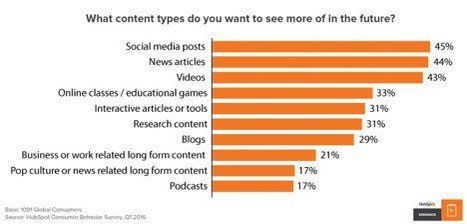

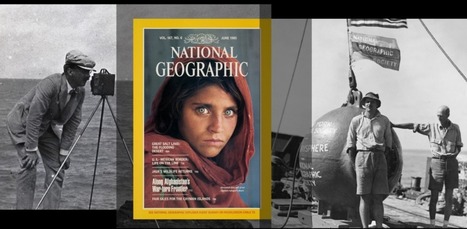
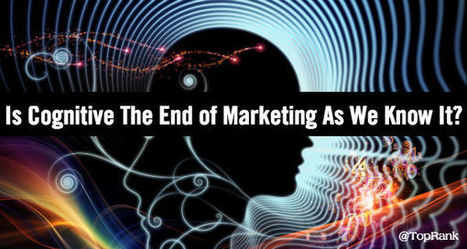
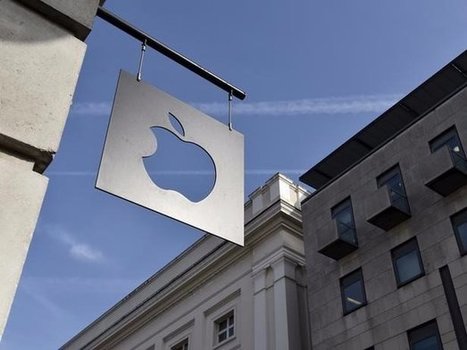

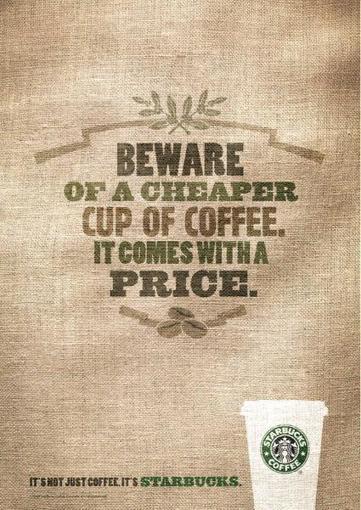























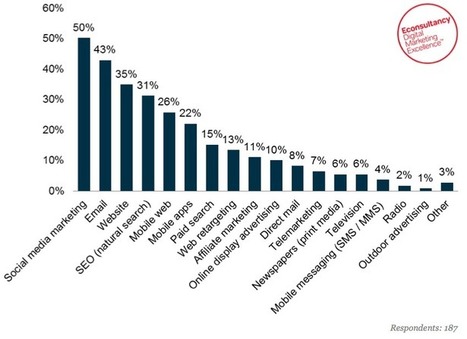










Four trends that impact the future of marketing.